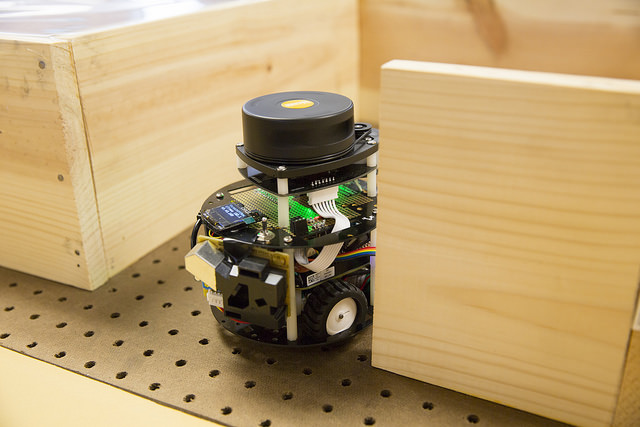Introduction
This project is a SLAM robot capable of airborne particle detection and surveillance. The target market is primarily cleanrooms in the semiconductor industry. A modular design will allow the robot to be used for other applications in the future. This replaces the main two current methods of particle detection: hand-held and wall-mounted sensors. This website describes the work completed to date, including background research performed, specifications and design of the current prototype, how to operate the current prototype, and future work that must be completed for a final product.
The problem faced by cleanrooms
The existing air quality monitoring methods in clean rooms used by sensitive electronics manufacturers in semiconductor industry have areas where they can be improved. The two deficiencies this project will address are, air quality devices located at fixed locations and the hand-held requirement. The main problems with fixed air quality sensors are there has to be a large number of them in a clean room environment and a third party must be contracted to complete an air quality assessment. If not strategically placed, a large number of sensors can lead to ineffective readings of an environment. The sensors also have the potential to neglect areas at high risk for air contamination. The downside to hiring outside personnel to conduct air quality test is the cost. It is typically very expensive, which may lead to less frequent testing. This project proposes a more efficient and cost-effective way to address the surveillance inaccuracies and high costs semiconductor companies face in cleanroom air quality monitoring.
Our solution
This page describes the additional The industry-ready prototype of our product is affordable and fully automated. It will have a user-friendly setup procedure and will require little or no training to operate. It is a small modular robot capable of simultaneous localization and mapping (SLAM) of its environment. It will map out its environment onto a web interface, remain aware of its location, and monitor the air quality within the environment 2ft.-6ft above ground level. The platform will support various hardware add-ons. A robot charging dock or “home station” will allow for conducive cleanroom integration.
This prototype, however, will focus on air quality monitoring. The works-like prototype of the design will use an inexpensive sensor for proof of concept. The data obtained from the air quality sensor will be displayed on the web interface along with the map. This project proposes an autonomous air quality monitoring robot to address the costly air quality assessment challenges faced by the semiconductor industry.

Photo credit: ASU Fulton Engineering Communications